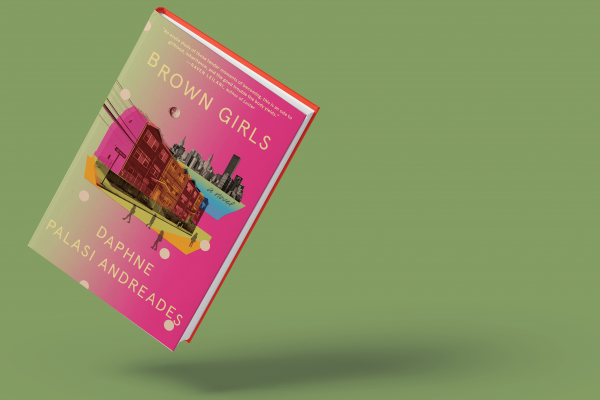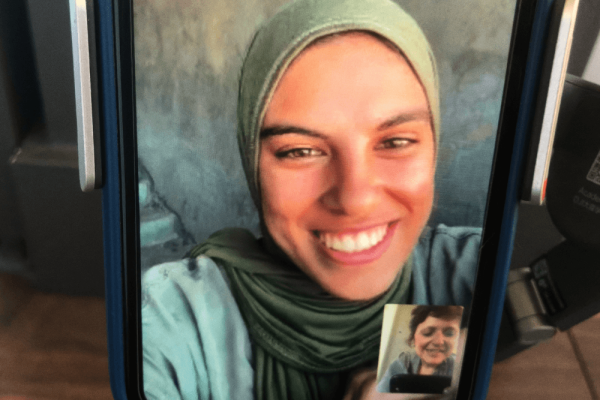WHISPER NETWORKS. The Greek muses. Immigrant aunties. Women, in groups, are loud and gripping storytellers. Daphne Palasi Andreades’ debut Brown Girls confirms this. In eight immersive sections, the novel chronicles the coming-of-age of the titular brown girls, mainly second-generation immigrants raised in the “dregs of Queens” (N.Y.).With the first-person plural narration, we follow a chorus that aims to reclaim the voices they lost at various junctures in their lives. After all, what demands a shout if not systemic silence?
The brown girls experience erasure early. Their teachers mistake Michaela for Naz, Nadira for Anjali. They snap at Sophie who is Filipino, but call her Mae, who is Chinese. To mold themselves into girls who are worthy of visibility, the brown girls begin to erase themselves. They lighten their skin. They quiet their rage. After middle school, education takes some of them away from Queens. They wrestle with the changes it brings. “Dutifully, we reposition our tongues,” they tell us. “Even in song, we become fluent in the language of our colonizers. Our English, impeccable. Our mother tongues, if we were taught them at all, become atrophied muscles, half-remembered melodies.”
At home, where they are called by their names, their families try to mold them into “good girls” who do not talk back. Visibility remains elusive. But when the brown girls check in with each other, the novel transcends the theme of voicelessness—because they celebrate one another. They envy and mourn. They honor their streets and remember the brown boys they desire but were told to avoid. They explore various identities, sexualities, and gender orientations. Some give in to expectations to survive. By making space for their multiplicities and contradictions, the chorus evokes a kind of call-and-response, a subconscious stream of communication between who the brown girls once were and who they become.
A challenge of the chorus can be the loss of individuality, but Brown Girls questions the American impulse to prioritize the individual over the collective. The specificity of Queens also grounds the novel. By centering a place where immigrants of many nationalities and backgrounds converged, Andreades’ brown girls show us what they lose to systemic racism, the prison-industrial complex, gentrification. There are references to life before Sept. 11, the Trump presidency, and the coronavirus pandemic, events that have marked the coming-of-age of American millennials. By distinguishing these brown girls from those outside Queens, Andreades further demonstrates that brown girlhood is not a monolith.
From childhood to motherhood to the afterlife, the brown girls exist between worlds. Still, no matter how far they go, they are bound to Queens. When they visit their respective motherlands (or fatherlands) as adults, they are struck by how they blend in but remain obviously foreign. Here, they wonder what makes them “American”? Is it their hormone-fed bodies? Their weak stomachs? Is it the fact that some of them can speak only English? They reflect on the dreams that took their parents away from home and realize that leaving is in their blood. “But perhaps,” they add, “it is also in our blood to return.” This is a novel about the many ways we return—in flesh, in memory, in spirit—to the places and people who made us.
Sojourners has partnered with Bookshop.org; when you order books through the links on sojo.net, Sojourners earns a small commission and Bookshop.org sends a matching commission to independent bookstores.

Got something to say about what you're reading? We value your feedback!







